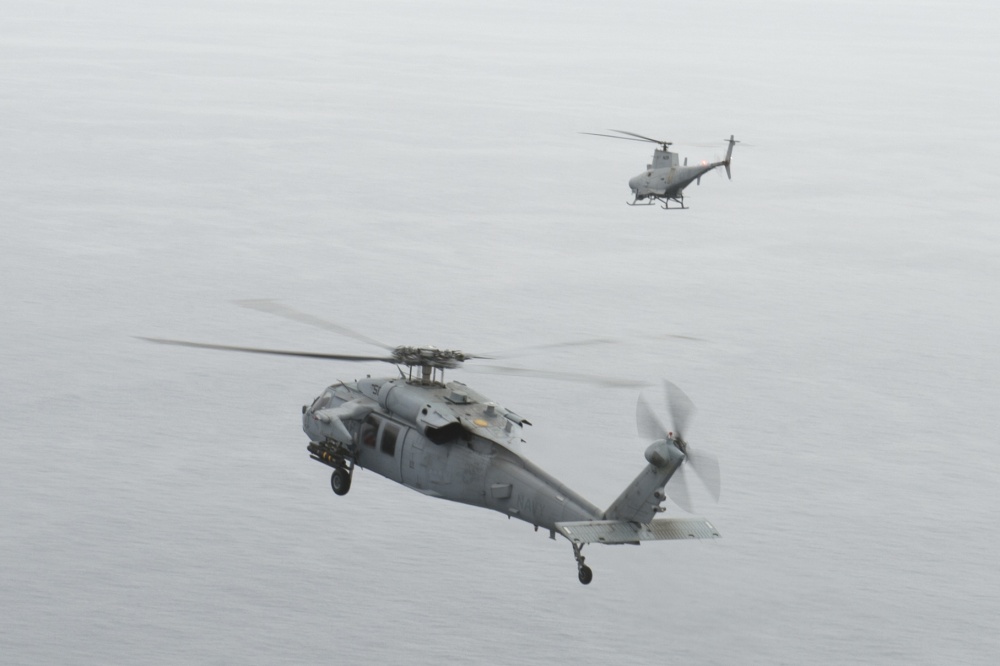
The Navy just graduated its first class of unmanned aerial vehicle test pilots from a new course designed to apply the lessons of manned test pilot programs to UAVs
For decades, the U.S. Naval Test Pilot School trained aviators how to evaluate new aircraft and the same concepts were applied all aircraft, Marine Lt. Col. Rory Feely, the school’s executive officer, told USNI News. But until now, the school hadn’t created a curriculum focused on training the unmanned aerial systems test pilots.
“Here’s my analogy, there was no test pilot school when the Wright brothers flew,” Feely said. “In an industry space, we need a certain amount of momentum behind the industry before the higher learning levels or institutional levels can come into place. Naval test pilot school is one of those institutions.”
By design, test pilot training isn’t as focused on the nuts and bolts of flying an aircraft – unmanned or manned – as it is on training the test pilots on what to look for when operating a system, Feely said. The school’s standard 11-month long test pilot course teaches aviators how to convey information about an aircraft’s operation to the rest of the aviation community and the Navy leadership involved with buying the system.
The recently completed supplemental course trained test pilots who complete the 11-month course and are heading to work with unmanned aerial systems, Navy Lt. Chris Wright, a systems instructor at the school, told USNI News. The UAS-focused short course involved a combination of academic study and hands-on experience with some unmanned systems currently used by the Navy, such as the unmanned Fire Scout and Triton systems. Eventually, the supplemental course will be incorporated into the full 11-month course.
The Navy is moving toward incorporating unmanned aerial systems into its daily operations. At sea, for instance, unmanned tankers that are part of the MQ-25A Stingray program will refuel fighters during carrier operations. The Marine Corps is evaluating how to use unmanned systems to resupply Marines in the field. Six pilots previously selected for the Navy’s unmanned program, participated in the supplemental course. Other pilots attended the academic portion of the short course.
Naval Test Pilot School graduates are the personnel who train to provide the Navy and Marine Corps leadership with feedback about how new and developing systems operate, Feely said. In general, test pilots are asked to evaluate aircraft they’ve never seen before. With unmanned systems, the same concept is at work – the test pilots are going to evaluate systems very few people are familiar with operating.
“What they need to have is a good idea of how these aircraft are operated or will be operated as well as they also need a very sound working knowledge about how the Navy deploys these capabilities anyway because no system operates by itself these days. These systems are integrated across various platforms,” Feely said,





